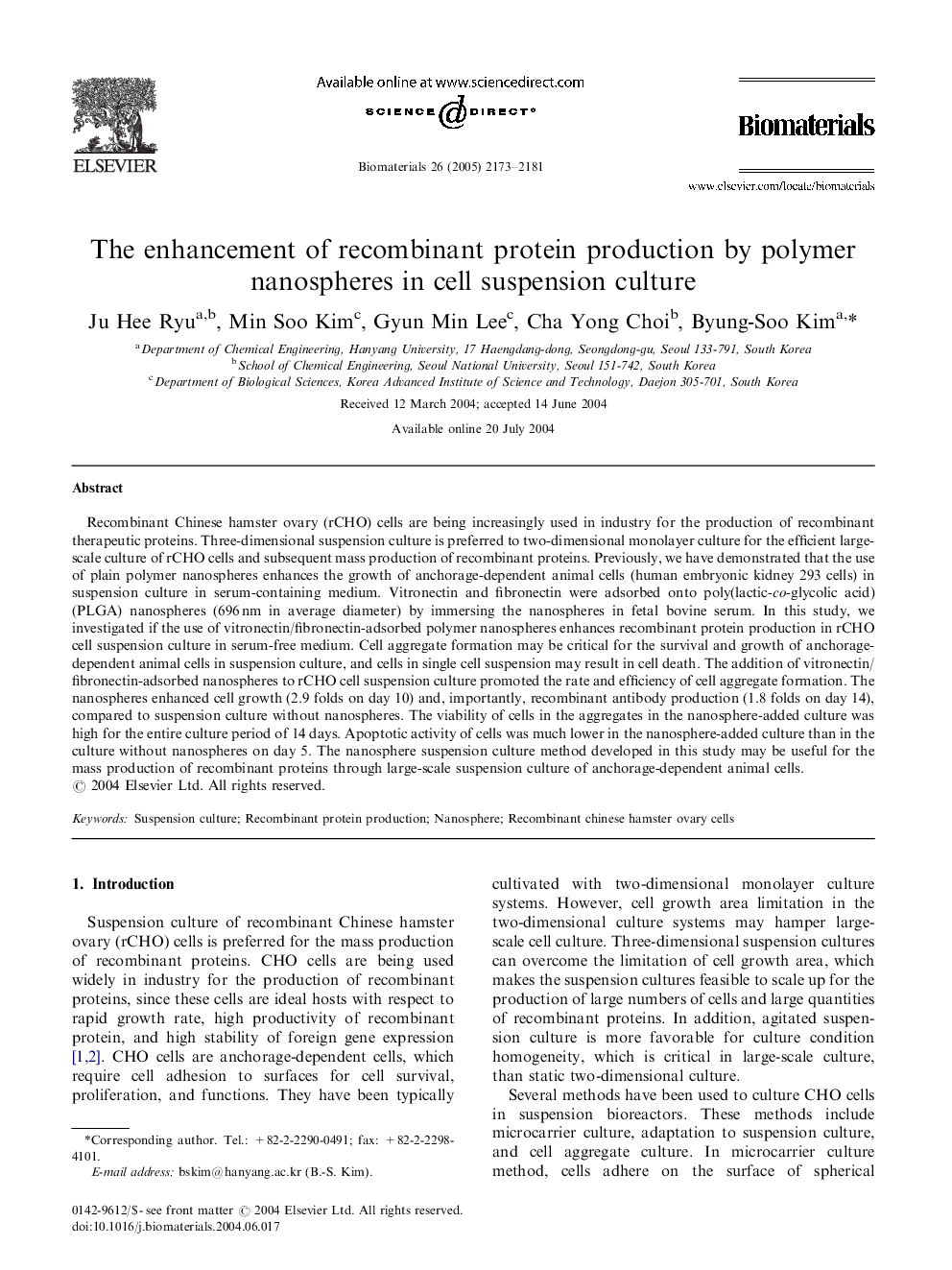| Article ID | Journal | Published Year | Pages | File Type |
|---|---|---|---|---|
| 12411 | Biomaterials | 2005 | 9 Pages |
Recombinant Chinese hamster ovary (rCHO) cells are being increasingly used in industry for the production of recombinant therapeutic proteins. Three-dimensional suspension culture is preferred to two-dimensional monolayer culture for the efficient large-scale culture of rCHO cells and subsequent mass production of recombinant proteins. Previously, we have demonstrated that the use of plain polymer nanospheres enhances the growth of anchorage-dependent animal cells (human embryonic kidney 293 cells) in suspension culture in serum-containing medium. Vitronectin and fibronectin were adsorbed onto poly(lactic-co-glycolic acid) (PLGA) nanospheres (696 nm in average diameter) by immersing the nanospheres in fetal bovine serum. In this study, we investigated if the use of vitronectin/fibronectin-adsorbed polymer nanospheres enhances recombinant protein production in rCHO cell suspension culture in serum-free medium. Cell aggregate formation may be critical for the survival and growth of anchorage-dependent animal cells in suspension culture, and cells in single cell suspension may result in cell death. The addition of vitronectin/fibronectin-adsorbed nanospheres to rCHO cell suspension culture promoted the rate and efficiency of cell aggregate formation. The nanospheres enhanced cell growth (2.9 folds on day 10) and, importantly, recombinant antibody production (1.8 folds on day 14), compared to suspension culture without nanospheres. The viability of cells in the aggregates in the nanosphere-added culture was high for the entire culture period of 14 days. Apoptotic activity of cells was much lower in the nanosphere-added culture than in the culture without nanospheres on day 5. The nanosphere suspension culture method developed in this study may be useful for the mass production of recombinant proteins through large-scale suspension culture of anchorage-dependent animal cells.
